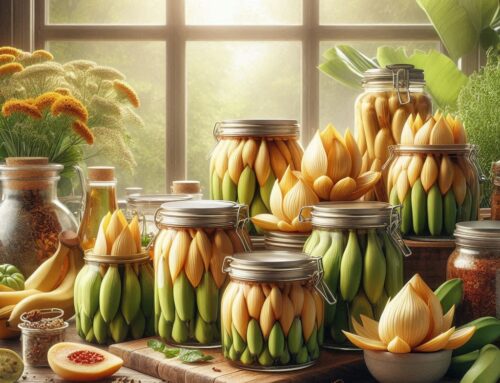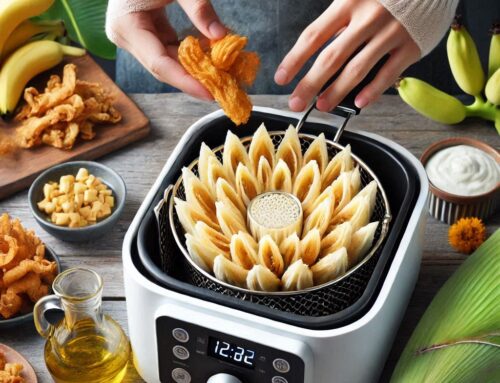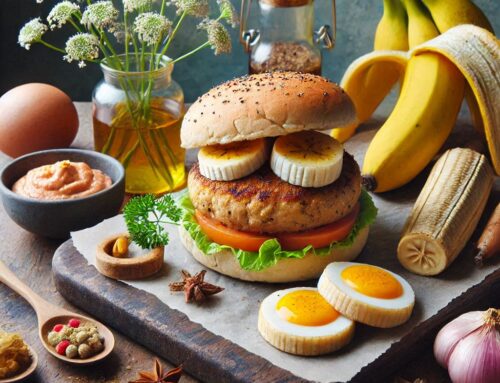
Introduction: Why Use Jackfruit Seed Flour?
As the demand for alternative flours continues to grow, jackfruit seed flour emerges as a promising option that combines nutritional benefits with sustainability. Jackfruit seeds, often discarded as waste, are now being recognized for their impressive nutritional profile and potential as a gluten-free flour alternative. Rich in protein, dietary fiber, and essential minerals such as iron and potassium, jackfruit seed flour offers a nutritious boost to various recipes.
One of the key benefits of using jackfruit seed flour is its gluten-free nature, making it an excellent choice for those with celiac disease or gluten sensitivity. It provides a versatile base for baking and cooking without compromising on texture or flavor. Additionally, utilizing jackfruit seeds aligns with sustainable practices by reducing food waste and promoting the use of every part of this abundant fruit.
Incorporating jackfruit seed flour into your diet not only introduces you to an innovative ingredient but also supports environmentally friendly choices in your culinary endeavors. As awareness grows about the nutritional value of jackfruit seeds and their role in creating sustainable flour options, this unique ingredient is poised to become a staple in kitchens around the world.
Gathering and Preparing Your Ingredients
When it comes to crafting homemade flour from jackfruit seeds, the initial steps of gathering and preparing your ingredients are crucial for ensuring a smooth process. Jackfruit seeds, often overlooked, can be transformed into a nutritious flour with the right preparation. To begin, collect fresh jackfruit seeds from ripe fruits. It’s essential to clean these seeds thoroughly by removing any sticky residue or fruit flesh that might cling to them. This can be done by rinsing them under running water and gently scrubbing with a brush if necessary.
Once cleaned, it’s time to focus on the essential tools needed for making flour. A reliable oven or dehydrator is crucial for drying the seeds completely before grinding; moisture can affect both texture and shelf life of the resulting flour. A high-quality grinder or food processor is also indispensable in achieving a fine consistency that resembles traditional flours.
By taking care in cleaning jackfruit seeds and using the right tools for preparation, you set a solid foundation for creating your own nutrient-rich jackfruit seed flour at home.
Step 1: Boiling the Jackfruit Seeds
Boiling jackfruit seeds is an essential first step in preparing them for further culinary use, such as making flour. To begin the process of boiling jackfruit seeds, start by gathering fresh seeds and thoroughly washing them to remove any residual pulp or debris. Once cleaned, place the seeds in a large pot filled with enough water to cover them completely.
Bring the pot to a boil over medium-high heat. It’s important to maintain a consistent boiling temperature throughout the cooking process. Boil the seeds for approximately 20-30 minutes; this duration allows them to soften adequately and ensures they are cooked through. You can check their readiness by piercing a seed with a fork; it should easily penetrate without much resistance.
After boiling, drain the water and let the seeds cool down before handling them further. This step not only softens the outer shell but also helps in loosening it, making it easier to peel off later on in preparation for grinding into flour. By following this simple yet effective boiling process for seed preparation, you lay a solid foundation for creating versatile and nutritious jackfruit seed flour.
Step 2: Peeling and Drying the Seeds
Once you’ve successfully boiled your jackfruit seeds, the next crucial step is peeling and drying them to prepare for grinding. Peeling boiled jackfruit seeds can be a straightforward process if done correctly. After boiling, allow the seeds to cool slightly until they are comfortable to handle. The outer shell should have softened enough to peel away with ease. Use your fingers or a small knife to gently remove the outer skin, revealing the smooth inner seed.
After peeling, drying the seeds is essential for achieving a fine grind later on. There are several drying methods for seeds that you can consider depending on your resources and time constraints. Air-drying is one of the simplest methods; spread the peeled seeds out on a clean cloth or tray in a well-ventilated area away from direct sunlight, allowing them to dry naturally over several days. For quicker results, you can use an oven set at a low temperature—around 150°F (65°C)—to slowly dehydrate the seeds over several hours, checking periodically until they are thoroughly dry.
Properly preparing seeds for grinding ensures that you achieve a consistent texture and enhances their storage life by reducing moisture content that could lead to spoilage. Whether you’re planning to incorporate these ground seeds into recipes or store them for future use, taking care in this step will ensure optimal results in flavor and quality.
Step 3: Grinding the Seeds into Flour
Grinding jackfruit seeds into flour is a straightforward process that transforms these nutritious seeds into a versatile ingredient for various recipes. To begin the homemade seed flour process, ensure the seeds are thoroughly cleaned and dried. Once prepared, you have two primary tools at your disposal: a grinder or a blender.
Using a grinder is often preferred for its ability to produce a finer consistency, ideal for baking or thickening sauces. Simply place the dried jackfruit seeds into the grinder and pulse until you achieve a fine flour-like texture. If using a blender, opt for one with high power to effectively break down the seeds; it may take longer and require more frequent pulsing to reach the desired consistency.
Throughout this process, it’s essential to pause occasionally and check the texture of your flour to ensure even grinding. Once complete, sift the ground mixture through a fine sieve to remove any larger particles, leaving you with smooth jackfruit seed flour ready for use in your culinary creations. This homemade approach not only provides fresh seed flour but also allows you to control its quality and purity right from your kitchen.
The Storage and Use of Jackfruit Seed Flour in Cooking and Baking
Jackfruit seed flour is an innovative alternative that is gaining popularity among health-conscious cooks and bakers. To make the most of this versatile ingredient, it’s essential to know how to properly store and use it in various recipes.
When storing homemade jackfruit seed flour, ensure that it is kept in an airtight container to maintain its freshness and prevent moisture from affecting its quality. Ideally, store the container in a cool, dry place, such as a pantry or cupboard. For extended shelf life, consider refrigerating or freezing the flour; just make sure it’s sealed tightly to avoid any odor absorption from other foods.
Incorporating jackfruit seed flour into your cooking and baking can be both exciting and rewarding. Its unique nutty flavor can enhance a variety of dishes. When baking with alternative flours like jackfruit seed flour, it’s important to note that they may behave differently than traditional wheat flours due to their distinct properties. You might need to experiment with ratios or combine them with other flours for optimal texture.
There are numerous recipes using jackfruit seed flour that you can explore. From pancakes and muffins to savory bread and pasta dishes, this gluten-free option offers endless possibilities for those looking to diversify their culinary repertoire while enjoying the nutritional benefits it provides.
Troubleshooting Common Issues When Making Jackfruit Seed Flour
When embarking on the journey of making jackfruit seed flour at home, you might encounter a few common issues that can affect the quality of your final product. Understanding these pitfalls and knowing how to address them can significantly improve the texture and consistency of your homemade flour.
One frequent challenge is improper drying of the seeds before grinding. If the seeds retain too much moisture, it can lead to clumping and uneven texture in your flour. To avoid this, ensure that you thoroughly dry the seeds after boiling or steaming them. Spread them out in a single layer on a baking sheet and place them in a low-temperature oven or under direct sunlight until they are completely dry and brittle.
Another common mistake is not removing the outer seed coat properly. The thin, papery layer surrounding each seed should be peeled off once they are dried. Leaving this layer intact can result in a gritty texture that detracts from the smoothness typically desired in flours.
Grinding technique also plays a crucial role. Using a high-powered blender or food processor ensures that you achieve an even grind without large chunks remaining. It’s advisable to pulse rather than continuously grind, allowing for better control over consistency.
Finally, always sift your ground flour through a fine mesh sieve to catch any larger particles that might have been missed during grinding. This step helps achieve uniformity and enhances the overall quality of your jackfruit seed flour.
By addressing these common mistakes when making seed flour at home, you’ll improve both its texture and usability in various culinary applications, ensuring each recipe turns out just as intended.






